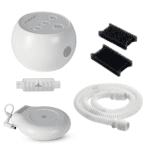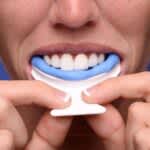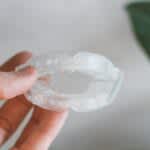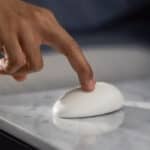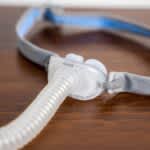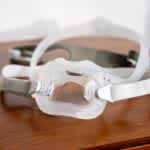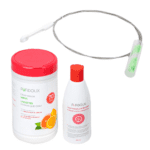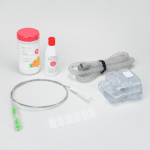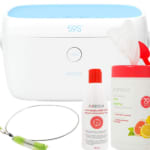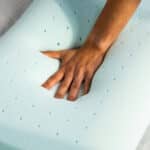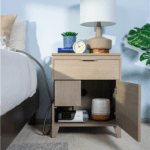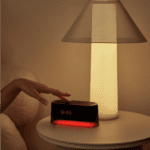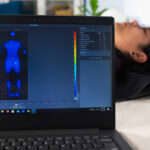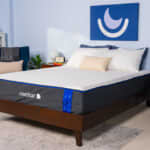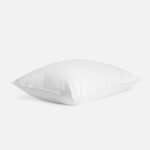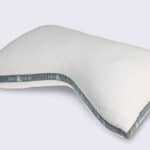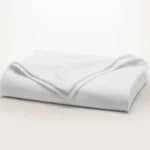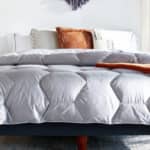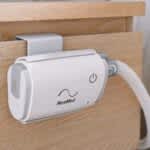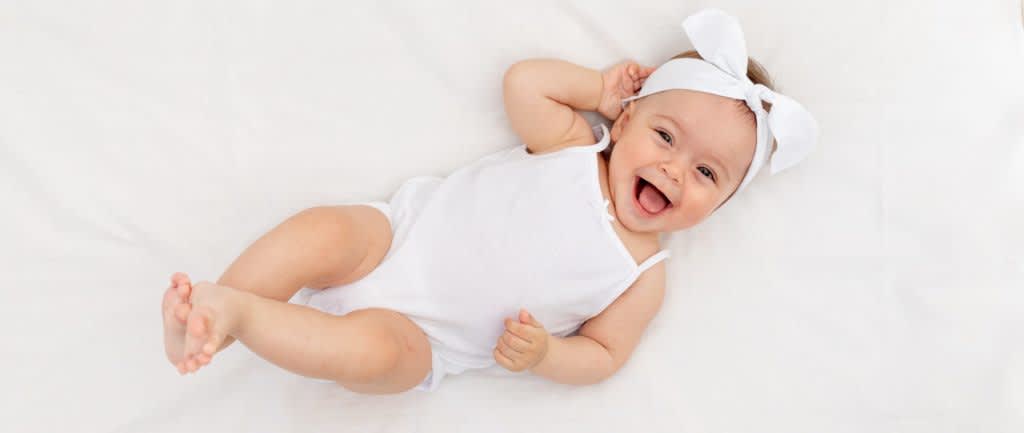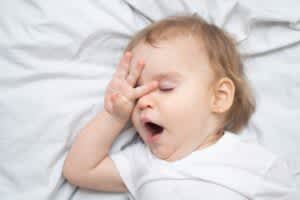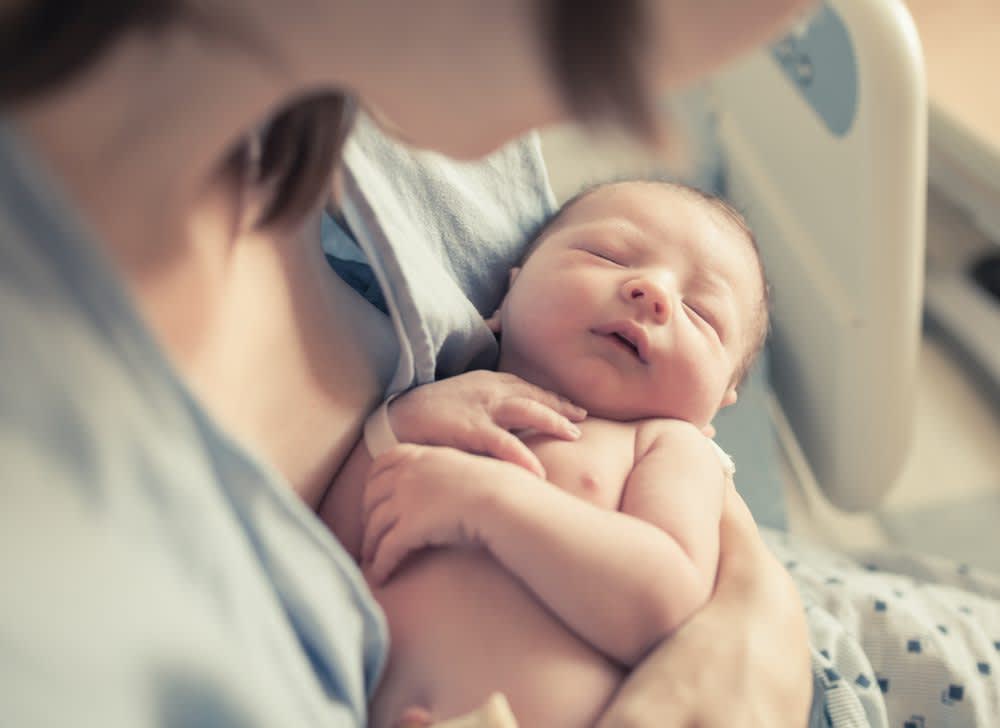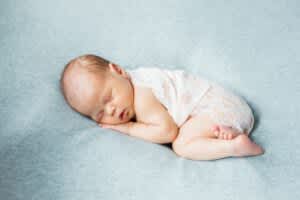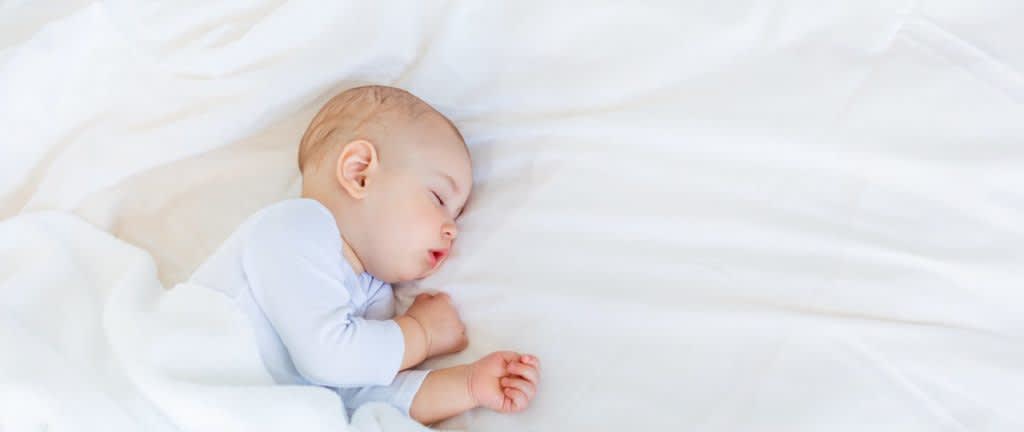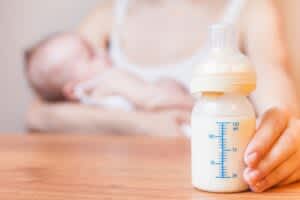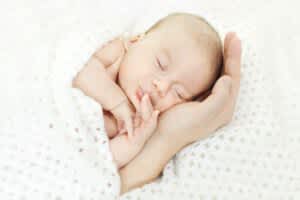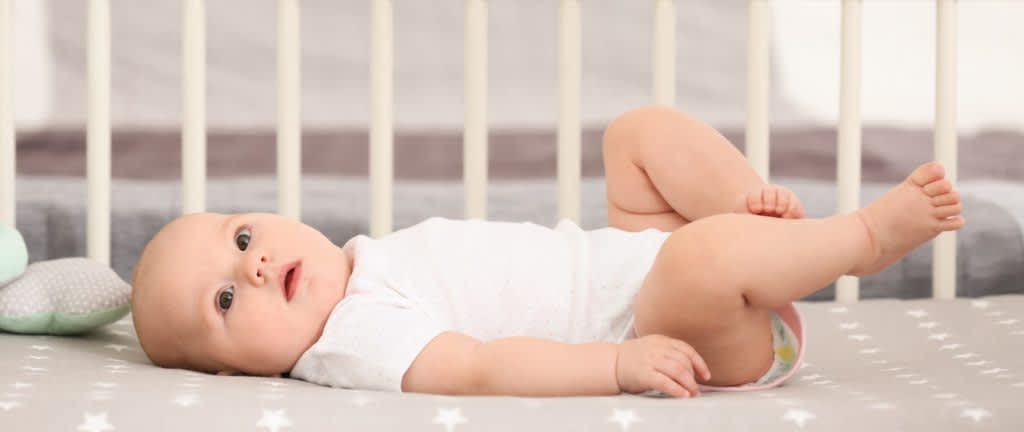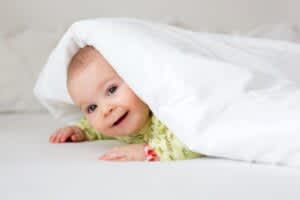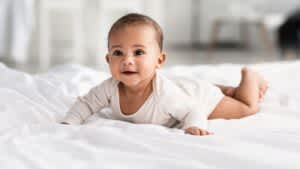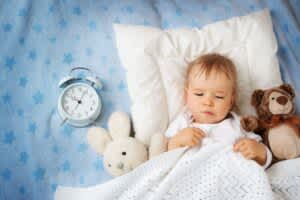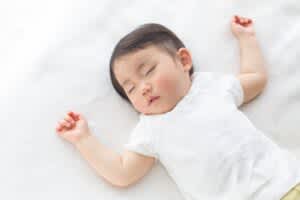Dressing your baby for sleep may seem simple compared to trying to get them to sleep through the night. However, there are several important considerations to take into account.
A baby should sleep in clothing intended for infant sleep in order to stay warm at night, since babies are not supposed to sleep with blankets or bedding apart from tight-fitted bed sheets. For example, babies often sleep in sleep sacks and onesies.
Key Takeaways
- Dress your baby for sleep in lightweight and breathable fabrics.
- Avoid sleep clothing and crib bedding that have loose parts, strings, or cords.
- Swaddle safely if desired, avoiding tight wrapping and always placing the baby on their back.
- Monitor your baby’s temperature to prevent overheating or chilling.
Expert Sleep Coaching for Children of All Ages

Sleep Doctor Pediatric Sleep Coaching
Sleep Doctor Pediatric Sleep Coaching offers personalized guides for parents of newborns and infants, toddlers, preschoolers, and school-age kids. You’ll meet virtually with a trained sleep coach to discuss your child’s unique needs. The program lasts between 1 and 5 weeks depending on the child’s age group.
How to Dress Your Baby for Bed
The American Academy of Pediatrics (AAP) recommends dressing babies in clothes similar to what an adult would feel comfortable wearing in the same temperature. You may choose to give them one additional layer beyond what an adult would wear, but no more.
Lighter Clothes on Warm Nights
In the summer months, you can dress your baby in a onesie or baby pajamas made of breathable materials such as muslin. On very warm nights, your baby may also be comfortable in a diaper with a lightweight swaddle, as long as they are not in an air conditioned room.
Cozier Pajamas for Winter
In cold weather, you can dress your baby in footed pajamas and a wearable blanket, otherwise known as a sleep sack. You may want to combine multiple layers, such as a long-sleeved onesie together with a sleep sack.
The American Academy of Pediatrics recommends against using blankets. Instead, infant sleep clothing, such as sleep sacks, is designed to reduce the chances of trapping or smothering your baby.
Is It Safe to Swaddle a Baby?
Swaddling is the practice of snugly wrapping a light blanket around the baby. It may be appropriate for very young infants who are laid on their back to sleep, although there is no evidence that it reduces the risk of sudden infant death syndrome (SIDS).
If you do swaddle your baby, the AAP recommends wrapping the blanket more firmly around the chest and more loosely around the hips and knees. You can leave the arms out or include them in the swaddle based on your baby’s personal needs. Commercial swaddles may have Velcro or other fasteners, which should be securely attached. Be sure the swaddle is not able to come loose and cover the baby’s head or neck.
Once babies begin trying to roll over, swaddling can become highly dangerous. If a baby rolls over while swaddled, they may become trapped face-down. To prevent this from happening, stop swaddling your baby for sleep after the first time you see them trying to roll over.
Is It Safe for Babies to Sleep With Hats?
It is not safe for babies to sleep while wearing hats, hoods, or any type of head covering. Avoid covering your baby’s head and face when putting them to sleep, as this can increase the risk of suffocation and overheating.
How Should Bedtime Clothes Fit Babies?
To avoid the risk of pajamas riding up over your baby’s face, opt for snug-fitting clothing. Looser clothing may become a fire hazard, and zipper pulls and buttons may be a choking hazard.
How to Tell If Your Baby Is Comfortable
You can check your baby’s temperature by looking for telltale signs like sweating and by placing a hand on their chest. If they are hot to the touch, remove one layer. Be particularly careful not to overdress a baby with a fever, cold, or infection.
Babies should not sleep in a room that is too hot or too cold. An easy way to tell if the room is at a comfortable temperature for your baby is if you also find it comfortable. Babies may cry when they are feeling too cold.
Shop the Best Crib MattressesSleep Safe Tips for Babies
The American Academy of Pediatrics has developed a list of research-based tips for helping infants sleep more safely during their first year of life:
- Back to sleep: Babies younger than 12 months old should always be placed on their back to sleep, even for short naps.
- Firm sleep surface: The best sleep environment for a baby is a safety-approved crib with a firm mattress and snug fitted sheet. Avoid soft mattresses, pillows, blankets, stuffed animals, and other soft or loose objects.
- Prevent overheating: Overheating is considered a risk factor for sudden infant death syndrome (SIDS), so while you want your baby to be comfortable, it is imperative to avoid over-bundling them.
- Sleep in the crib: Do not let your baby sleep on a couch, armchair, or your bed. If they fall asleep in a car seat or elsewhere, move them to their own crib as soon as possible.
- Share a room, not a bed: Most experts recommend against sharing a bed with your infant, but it is a good idea to sleep nearby in the same room. Remove bedding and avoid soft surfaces such as couches if you are worried about falling asleep while feeding or rocking your baby. Avoid bed-sharing with a preterm infant, a baby with low birth weight, or an infant younger than 4 months old.
- Keep baby away from smoke, alcohol, and drugs: Sleeping in the same bed as an adult who smokes, drinks alcohol, or uses drugs increases the risk of SIDS.
- Pacifier: Offer a pacifier to help your baby fall asleep, but be sure to remove it from the crib once they fall asleep.
- Nearby objects: Keep electrical cords, curtains, mobiles, and other objects out of reach of the crib.
References
Ask the Sleep Doctor
Have questions about sleep? Submit them here! We use your questions to help us decide topics for articles, videos, and newsletters. We try to answer as many questions as possible. You can also send us an email. Please note, we cannot provide specific medical advice, and always recommend you contact your doctor for any medical matters.


